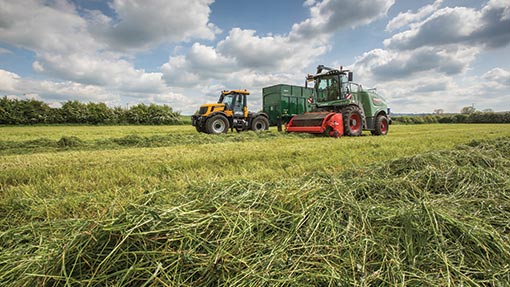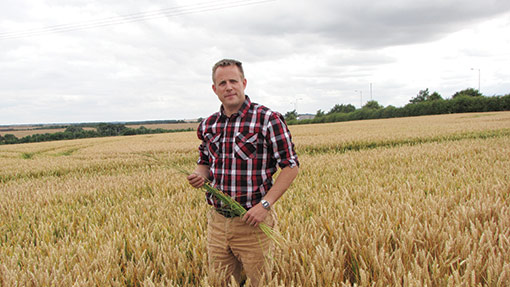How grass leys could ease the blackgrass burden

Putting a grass ley into an arable rotation could be a profitable alternative to spending increasing amount on herbicide and help some heavy land farms comply with the new three-crop rule.
It might not be the right approach for everyone with a blackgrass problem, but where there is a local market or a need for grass it offers a useful option, says Northamptonshire-based independent agronomist Damian McAuley of consultants Indigro.
“Temporary grass is defined as up to five years as far as the three-crop rule is concerned. So it’s a possible crop option for farms that find it difficult to establish spring crops successfully, or are unable to make use of other break crops,” he says.
The key to getting good weed control from a ley is to stop the blackgrass from shedding seed.
“Blackgrass is an annual, so the seed heads have to be cut before they mature and become viable. With the right management, that can fit in well with cutting for silage or hay,” he adds.
Short-term grass leys
Pros
- Grassweed control
- Three-crop rule
- Non-chemical approach
- Soil conditioning effect
Cons
- Need a market/use for grass
- Correct management essential
While grass leys have always been part of a mixed farming operation, they might also be an option where land swapping with a neighbour is possible or there’s a nearby requirement for additional forage.
Ideally sown in mid-August, a ryegrass blend left in place for three years will clean a field, as there is an 80% decline a year in the weed population, he reports.
“Whether it’s ryegrass or a ryegrass/clover mix, it is a small seed, so the seed-bed needs to be well consolidated,” advises Mr McAuley.
“It does need to go in quite early, when the soils are still warm and in good condition. Slugs can be an issue and no starter fertiliser is required,” he adds.
The grasses then grow together. “It isn’t a case of smothering or outcompeting the blackgrass. It germinates and grows with the ryegrass,” Mr McAuley says.
The subsequent three silage cuts taken from the grassland have to be timed to fit in with blackgrass and ryegrass development and avoid grass seeds being shed.
“The ley’s cutting regime must be determined by the intention to clean up the blackgrass, maybe at the expense of maximising silage yield. If the weed seed is allowed to mature, it won’t have the desired effect,” he says.
The first silage cut is usually taken in May, followed by the second six weeks later.
“It’s a similar story with the second and third cuts as you don’t want ryegrass seeds being shed and ending up infesting an arable rotation. So you must be guided by the development of the grass, not the yield.”
Ryegrass can be controlled in wheat with Atlantis. “But one of the reasons for introducing a grass ley is to make use of a non-chemical approach.”
Agronomy of the ley is fairly straightforward. It has a requirement for nitrogen, potash and sulphur, with broad-leaved weeds occasionally needing control.
“The biggest expense is on nitrogen, as it will receive up to 300kg/ha of nitrogen in a year. That can be reined back a bit, but yields will come back accordingly,” he says.
At the end of its life – usually after three years – there are some potential pest problems for following crops. Frit fly, leatherjackets and wireworm can be troublesome, warns Mr McAuley, although all can be controlled.
“Where frit fly is around, it causes problems in following cereal crops. But by leaving six to eight weeks between burning off the ley and drilling the cereal crop, you have a solution. The pest can’t survive without a grass host,” he adds.

If time doesn’t allow this approach, it is possible to add an insecticide to a glyphosate spray.
Leatherjackets will damage the roots of following cereal crops, so where they are found – often in patches – an insecticide can be used.
“Wireworms are unlikely to be such a problem after a short-term ley,” he adds.
By its third year, a temporary ley might only produce two cuts. “Burning it off after the second cut gives an opportunity to work the ground for a weed flush and deal with any pests, before having an early entry for oilseed rape.”
For most farm businesses, only a small amount of land should go into grass. “It’s not practical to put a third of the area into leys. The chosen fields needs to be accessible and may have to be fenced if grazing is planned,” he adds.
“It’s a niche approach, but can be very effective, and it stops any further resistance pressure,” concludes Mr McAuley.

